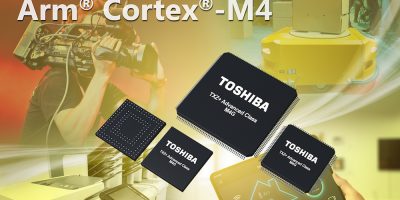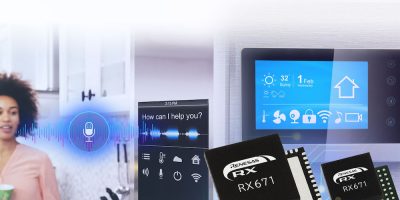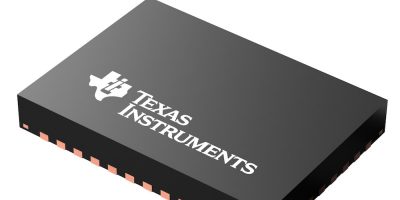Toshiba Electronics Europe has added 20 microcontrollers to its TXZ+ family. The M4G group microcontrollers use Arm Cortex-M4 microcontrollers for data processing and are manufactured using a 40nm process.
The microcontrollers, in common with existing TXZ+ devices can be used for high speed data processing applications, for example in IoT equipment, building automation, factory automation, home appliances, AV equipment, multi-function printers and other office equipment.
In addition to the Arm Cortex-M4 core, the new microcontrollers include a floating point unit (FPU) that runs at speeds up to 200MHz. They also integrate 2048kbyte of flash memory for code, a further 32kbyte of data flash with 100k write cycles endurance and 4kbyte of user data flash. They also incorporate multiple interfaces and various communication options.
As with the other devices in the M4G group, the latest additions have enhanced communication functions integrated as a serial memory interface. Among the standards supported are quad / octal SPI, audio interface (I2S), UART, FUART, TSPI and I2C. A three-unit DMAC and bus matrix structure is claimed to “significantly” improve communication throughput, compared to conventional products.
The new microcontrollers have a high speed, high precision 12-bit ADC to support a variety of sensing applications. The ADC allows individual sample-and-hold times to be set for each input channel with up to 24 channels. If integrated with Toshiba’s advanced programmable motor driver (A-PMD), the devices can also be used in AC motor, brushless DC (BLDC) motors, said the company.
Self-diagnosis functions for ROM, RAM, ADC and the clock contribute to the devices’ IEC60730 Class B functional safety certification. The microcontrollers maintain good compatibility with devices within the existing TXZ family M4G group.
Comprehensive documentation, sample software (with examples of actual usage), and driver software for each peripheral are available for free download on the company’s website. Additionally, evaluation boards and development environments are provided in co-operation with Toshiba’s global ecosystem partners.
The new microcontroller products are in mass production now.







